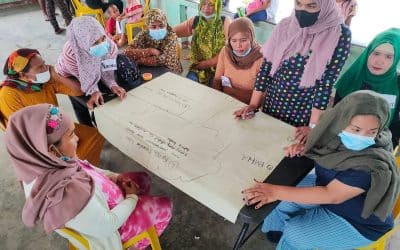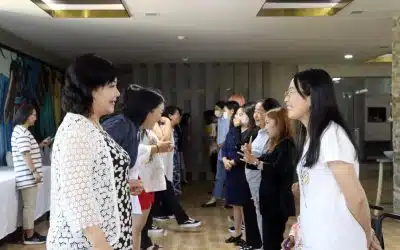InAsia
Insights and Analysis
Amid Staunch Opposition, ‘Sin Taxes’ Move Forward in Philippines
December 19, 2012
After months of hot debate and decades in the making, President Benigno Aquino Jr. is signing into law major changes to the tax structure on alcohol and tobacco products. This so-called “sin tax” is expected to raise P30 billion ($750 million) to provide health care services for over 5 million “very poor” families in its first year of implementation (2013). Hopes are also that the higher prices of the goods as a result of the tax will reduce the number of people smoking, especially younger people, and save tens of thousands of lives.
For long-time followers of reform in the Philippines, the new law is seen as a huge victory against opponents of the reform. In 2010, Philip Morris and Fortune Tobacco combined to make up 90 percent share of the cigarette market. San Miguel Brewery is the largest producer of beer in the Philippines, with a total market share of approximately 95 percent in 2008.
Further complicating reform measures is an election process in the Philippines that leaves open incentives for widespread corruption. Every three years, an estimated 40,000 elected positions are open and attract about 200,000 candidates. Presidential campaigns are estimated to cost about P1 billion ($25 million) each. Because there is no government support for candidates and political parties, all candidates have to raise their own money – and it’s no surprise that these gigantic corporations have enormous influence.
To understand how we got to where we are today, it’s helpful to look back at the historical context of the tax reform efforts.
President Corazon Aquino (1986-1992): Good Start
To fully appreciate the tax reform story, we start with the administration of President Corazon Aquino. After a historic “People Power” revolution, the administration quickly sat down to the business of re-establishing good governance and responsible fiscal management. Confronted by significant shortfalls in revenue due to the desperate actions of the Marcos dictatorship, the Aquino administration used its authority to introduce 29 new tax measures that included changes to the income tax and the introduction of the value-added tax (VAT) in June 1986. As a result, taxes increased from 10.7 percent of GDP in 1985 to 15.4 percent in 1992.
President Ramos (1992-1998): Major Setback
The Ramos administration ushered in a range of important and critical reforms in civil aviation, sea transport, telecommunications, and water privatization, among others. Under President Ramos, the tax effort would peak at 17 percent in 1997. Toward the end of the administration, he recognized the need for tax reforms as a number of new laws effectively narrowed and eroded the tax base. The 1997 Comprehensive Tax Reform Program included a reduction in the corporate income tax rate, an expanded VAT law, a restructured tax on downstream oil industry, and restructured taxes on cigarettes and liquor – the so called “sin taxes.” Unfortunately, the reforms faltered. In hindsight, some argued that elite families flexed their political and election financing muscle to gain significant advantage.
There was virtually no progress under Estrada (1998-2001), and under Arroyo (2001-2010), a move to an Expanded Value Added Tax (EVAT) did not change the treatment of “sin products.” Some attribute this to the close relationship between the dominant alcohol and tobacco companies and those administrations.
President Benigno S. Aquino (2010-present): Opportunity
The election of President Benigno S. Aquino in May 2010 represented a new opportunity for reformers to introduce a more progressive and fair excise tax system. But reformers faced significant obstacles. The first hurdle was posed by the president himself. In January 2010, five months before the election, then-candidate Aquino announced boldly to a major business association that “we will refrain from imposing new taxes or increasing tax rates.” Instead, he promised to focus on improving tax administration at the Bureau of Internal Revenue and the performance of the Bureau of Customs by curbing and punishing tax evasion and smuggling.
Soon after his election, the tone began to change. In his July 26, 2010 State of the Nation Address, the president lamented that in the first six months of the year, government expenditure exceeded revenues, which led him to propose public-private partnerships and amend the fiscal incentives given to investors.
Breakthrough
By mid-2011, change was in the wind. In his July 2011 opening remarks for the resumption of Congress, Speaker of the House Belmonte, declared: “It is high time that we restructure our tobacco and alcohol excise taxes. The prevailing multi-tax rate classification of cigarette and alcohol products and the pegging of sin taxes to 1996 price levels have convoluted the tax system and shrunk the tax base, dampening the government’s revenue efforts and essentially depriving the public of resources which could have been used to fund the most basic of services.”
One month later, at the second Legislative Executive Development Advisory Council meeting, administration and legislators placed the restructuring of excise tax on alcohol and tobacco products on the agenda for the first time. For the next few months, committee hearings were conducted at the House of Representatives.
Reform Conjuncture
By late 2011, reformers and allies in the administration were increasingly frustrated by the slow pace in the House Ways and Means Committee. Some doubted the sincerity and intentions of Committee Chairman Rep. Mandanas. (Philip Morris operates a $300 million cigarette manufacturing plant in his Congressional district.) The final straw seems to have been the refusal of Rep. Mandanas to sign an administration-backed resolution calling for the impeachment of Chief Justice Renato Corona. Soon after, Rep. Ungab, a staunch member of the president’s Liberal Party, was appointed chair. By June 2012, the House of Representatives passed the legislation to reform the excise taxes on tobacco and alcohol.
Battle Shifts to Senate: More Surprises
During the second half of 2012, the Senate held hearings, while advocates and opponents of raising the “sin taxes” used the media and events to explain their respective positions. On Oct. 10, 2012, Senate Ways and Means Committee Chair Ralph Recto issued the committee report. Almost in unison, reform advocates from the government and civil society cried foul because of the low amount of new revenue being proposed. Surprisingly, on October 15, Sen. Recto resigned as committee chair. He was quickly replaced by staunch Aquino administration ally, Sen. Franklin Drilon. Events moved quickly but not without efforts to stall and derail by the opposition. Amendments to weaken or discredit the reform were introduced. One by one, the justifications posed were addressed by both Congressional allies and civil society partners.
In the end, the reformers in the Aquino administration and civil society achieved all of the original objectives, and given the enormous resources available and the billions at stake for the opposition, it is still a wonder that the reform was passed. A number of factors emerged that resulted in a victory – from the core group of committed individual leaders who have worked on tax reform for most of their careers, to informal networks that served as the basis for the robust informal coalition between government and civil society. Meanwhile, the strategic decision to use the new resources to broaden the scope for universal health care helped build a very broad civil society coalition. In the end, it is good news for the reform movement, and for the health (and pocketbook) of the nation that this law was finally passed.
Jaime Faustino manages the Economic Reform and Development Entrepreneurship Program in the Philippines. He can be reached at [email protected]. The views and opinions expressed here are those of the individual author and not those of The Asia Foundation.
About our blog, InAsia
InAsia is posted and distributed every other Wednesday evening, Pacific Time. If you have any questions, please send an email to [email protected].
Contact
For questions about InAsia, or for our cross-post and re-use policy, please send an email to [email protected].The Asia Foundation
465 California St., 9th Floor
San Francisco, CA 94104
The Latest Across Asia
Program Snapshot
May 2, 2024
News
April 25, 2024

2024 Lotus Leadership Awards
The Lotus Leadership Awards recognize contributions towards gender equality in Asia and the Pacific







0 Comments